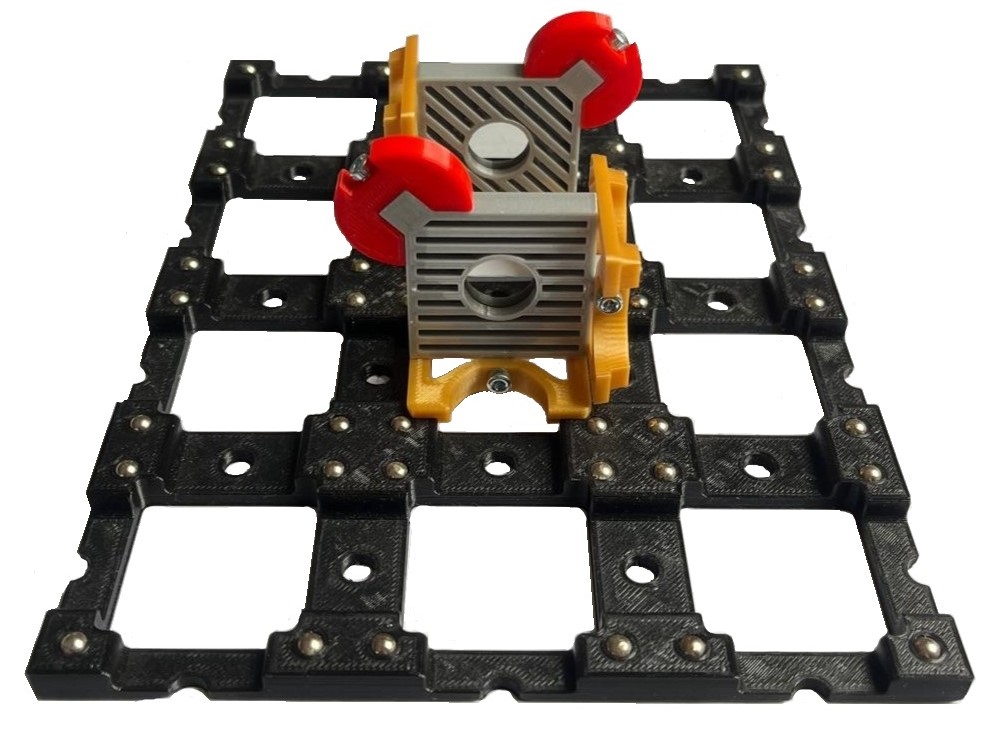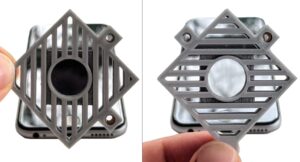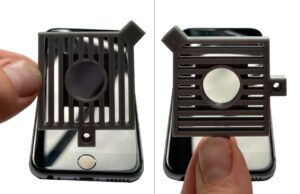
In contrast to the normal polarizing filter, the two basis polarizing filters can only be set to two specific orthogonal polarizations. The grid around the polarizing filter shows which polarization direction is transmitted.
One of the two polarizing filters (diagonal grid) can be set to the polarization directions +45° and -45°. The second polarizing filter (horizontal grid or vertical grid) can be set to the polarization directions 0° and 90°. Together, the two orientations of each polarization filter then provide a possible measurement basis. For this reason, the polarising filters are referred to as X-base polarizing filters (diagonal grid) and +-base polarizing filters (horizontal/vertical grid).
On this page you will find information on assembly, special features and possible experiments.
Assembly
Exploded view
Material:
- 4x 01E_Go_V*_basis_polarizing_filter_base
- 2x 06A_Si_V*_basis_polarizing_filter_cover
- 1x 06B_Si_V*_+basis_polarizing_filter_centre
- 1x 06C_Si_V*_xbasis_polarizing_filter_centre
- 2x 06A_Re_basis_polarizing_filter_handel
- 6x Threaded insert, M3
- 6x Allen cylinder head screw, M3x12
- 2x Polarizing filter foil 17mm x 17mm
Tools:
- Allen key – 2,5 mm
- Soldering iron (with melting aid)
- Scissors (for cutting the polarising filters to size)
You will also find detailed instructions for assembly as well as a component and material list with the STL files for 3D printing and links to the relevant shops.
Special features
Alignment of the polariZing filter foil
The correct alignment of the polarizing filter is difficult when assembling. The Brewster angle can be used for this purpose:


The orientation of the polarizing filter film can be determined using the Brewster angle, for example with a glass plate or the display of a smartphone. Hold the film in front of the reflected polarized light. The orientation of the polarizing film is 0° when the reflected light is absorbed. The orientation of the polarizing filter holder will help you with this: if the slots in the holder are aligned vertically, the reflected light should be absorbed; if they are aligned horizontally, it should be transmitted.
Filter cover
The filter cover is inserted into the corresponding opening after the polarizing filter and snaps into place to hold the polarizing filter firmly in place.
Experiments
- BB84 model experiment – 1 pair
